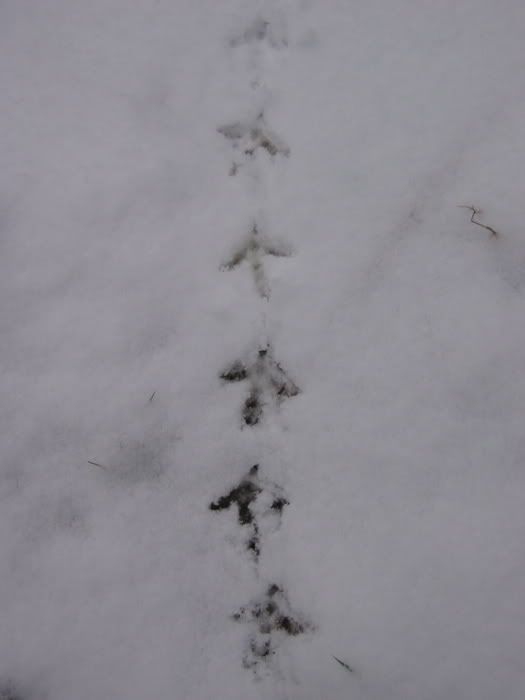 Want to add a special challenge to your fall turkey hunting? Try tracking a tom in the snow.
Want to add a special challenge to your fall turkey hunting? Try tracking a tom in the snow.Snow is not uncommon in American states and Canadian provinces where the fall turkey hunting season runs into late November or even into December. Tracking a turkey in the snow works just like tracking a deer. Look for fresh tracks after a snowfall and turned up forest litter where turkeys scratched the ground in search of food under the snow. The dark color of the birds makes them clearly visible against the snowy white background. The white winter landscape will not only make turkeys visible but you too! A good head to toe, including face and hands, camouflage such as ASAT® and Predator® winter white will do a tremendous job of keeping you hidden from wide-eyed turkeys.
As you follow fresh turkey tracks in the snow keep a sharp eye ahead and to the sides of you, stopping every few steps and observe the surrounding area with your binoculars. It has often been said that if a turkey with his exceptional eyesight could smell as well as a deer it would become an un-huntable animal. Turkey’s eyes will detect the slightest movement and quickly draw their conclusions from what they have seen.
The good news is that unlike deer, turkeys are quite noisy critters. Often they can be heard yelping and/or scratching in the leaves from some distance. When you see a tom or flock of turkeys the tough part of your hunt begins. Stalking undetected within shooting range of a bird is very difficult but a hunter who plans the stalk carefully,takes his time, and is well camouflaged can do it.
Besides good camouflage use every available terrain feature to disguise your human outline and avoid being highlighted against the sky by walking on a ridge top. Avoid making noise by stepping carelessly onto woodland debris or brushing against branches. Carry a friction or mouth operated turkey call with you- should you inadvertently make some noise stop and produce a lost hen yelp with your turkey call. This will let the other turkeys think that another bird is nearby and made that noise. If you’re lucky the turkeys will follow your call in anticipation of meeting up with another member of their flock.
As I said before the most difficult part of snow tracking turkeys is getting close to the birds. If you choose a bow as your hunting weapon it might be better to set up and then try to call the birds into bow shooting range. The same holds true for hunters pursuing turkeys with shotguns. If you hunt in a U.S. State or Canadian province where rifles are permitted to hunt fall turkeys you’re in luck and can stalk a tom to within shooting range without fear of spooking them.
Some advice on suitable rifles for turkey hunting: your normal deer hunting rifle will kill a turkey but will also render it inedible. For minimum meat damage use a rifle of a smaller caliber, such as the .233 Remington, .243 Winchester and .22-250 Remington. These calibers maintain excellent accuracy at ranges of up to 200 yards. The little .17 Remington has gained quite a following among rifle turkey hunters. The small 25-grain bullets will kill turkeys instantly and destroy very little meat. At ranges less than 100 yards the .22 Winchester Rimfire Magnum has been a longtime favorite among rifle turkey hunters, and for good reasons. The little .22 is potent turkey medicine and the rifles are of an ideal weight to carry around the woods all day long.
Give turkey snow tracking a try before the fall season closes. You have nothing to lose -only to gain. Besides it is great fun and makes the hunt a little more challenging. This might just be what you need to do to get you fall turkey tag filled this year.
Tags: Snow tracking Turkeys, Turkey Hunting Tactics, Turkey Hunting Rifles, ASAT Camouflage, Predator Camouflage, Turkey Hunting Tips

No comments:
Post a Comment